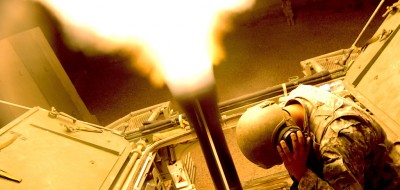International transfers of major conventional weapons
The volume of international transfers of major conventional weapons (MCW) for the period 2006-10 was 24% higher than for the period 2001-2005, according to new data on International Arms Transfers[i] published by Stockholm International Peace Research Institute (SIPRI). According to SIPRI, 10 countries accounted for 89% of all exports of MCW in the last five years: USA (30%), Russia (23%), Germany (11%), France (7%), UK (4%), Netherlands (3%), China (3%), Spain (3%), Italy (2%), and Sweden (2%). SIPRI exposes that since 1950, the states that receive the largest proportion of MCW have changed much more than the states that supply the most. However, in recent years, the composition of the five largest recipients has remained relatively stable. Let’s see which are the regional trends.
Africa: 7% of imports of MCW in 2006-2010
In 2006–10, Algeria and South Africa were the two largest MCW importers in Africa, accounting for 48% and 27% of the region’s imports respectively. The third was Sudan with the 4%. Germany accounted for 35% of supplies of major arms to sub-Saharan Africa, China and Sweden for 10% each one and Ukraine for 8%. China supplied major arms to 16 countries in the region and Ukraine to 8 countries.
In sub-Saharan Africa had been deliveries of major arms to several areas of tension and conflict. For example, Ugandareceived tanks from Russia and artillery from Israel, and the Democratic Republic of the Congo received combat aircraft from China.
The Americas: 12% of imports of MCW in 2006-2010
USA was the largest importer of conventional weapons in the Americas in 2006–10 and the 10th largest in the world. In South America, the total volume of transfers and its share of the world have increased as several states are engaged in modernization programs. Chile was the largest importer of conventional weapons in South America in 2006–10 and the 12th largest in the world. Meanwhile, Venezuela’s arms imports increased by 359% between the periods 2001–2005 and 2006–10.
Asia and Oceania: 43% of imports of MCW in 2006-2010
Six of the 10 largest importers in 2006–10 are from this region: India (1st), China (2nd), South Korea (3rd), Pakistan(4th), Singapore (7th) and Australia (9th).
India was the world’s largest importer of MCW in 2006–10. Its volume of deliveries in 2006–10 was 21 per cent higher than in 2001–2005. Arms transfers to Pakistan increased by 128 per cent between the periods 2001–2005 and 2006–10.
While China was the second largest importer of major weapons in 2006–10, deliveries to China in that period were barely half of the volume in 2001–2005. Deliveries in 2010 were limited to helicopters and artillery produced under license and engines for aircraft, ships and armored vehicles.
European Union: 21% of imports of MCW in 2006-2010
The largest importer of major conventional weapons in Europe in recent years has been Greece, which during 2010 announced a review of its procurement plans in light of the economic crisis. However, in 2010 it placed an order for the licensed production of two more Type-214 submarines from Germany, in addition to the four that were ordered in 2000 and 2002. The UK and Poland were also among the 20 largest importers in the world in 2006–10. Both, Greece and Poland, and other European states are acquiring major conventional weapons for use in Afghanistan.
Azerbaijan (the 40th largest importer of MCW in 2006–10 and with a volume of imports 323% higher than in 2001–2005) is seeking foreign assistance to develop its own arms industry. In 2006-10, it has imported a large quantity of tanks, armored vehicles, aircraft and artillery, with a backdrop of increasingly bellicose rhetoric towards Armenia regarding the disputed region of Nagorno-Karabakh.
The Middle East: 17% of imports of MCW in 2006-2010
International transfers of conventional weapons were on decline to 21% in the period 2001–2005. During 2006–10, 23% per cent of all major arms transfers to the Middle East went to the United Arab Emirates (the 6th largest arms importer worldwide in that period), being the USA, France, Italy and Russia are the key suppliers to the UAE, and at least 10 other countries are supplying major arms to the country.
International transfers of conventional weapons to Israel (the second largest arms importer in the region) were on the decline in 2010 after the delivery of 102 F-16I combat aircraft, financed by the USA, completed in 2009. However, US military aid to Israel continued. Israel failed to agree to procure a submarine and two frigates from Germany, the only other significant supplier of major arms to Israel.
In 2006–10, Egypt (the third largest arms importer in the region) received 60% of its imports of major arms from the USA or other suppliers as Russia (15%), Montenegro (6%), the Netherlands (6%) and China (5%).
Saudi Arabia ranked as the 22nd largest arms importer in 2006–10. However, in 2010 it was announced that it was negotiating several major deals.
This is a non profit explanation
For further information:
The SIPRI Arms Transfers Database: http://www.sipri.org/databases/armstransfers
[i] Available here: http://books.sipri.org/product_info?c_product_id=421.










Pingback: Trends in international arms transfers: the recipients « Gente fina's Blog